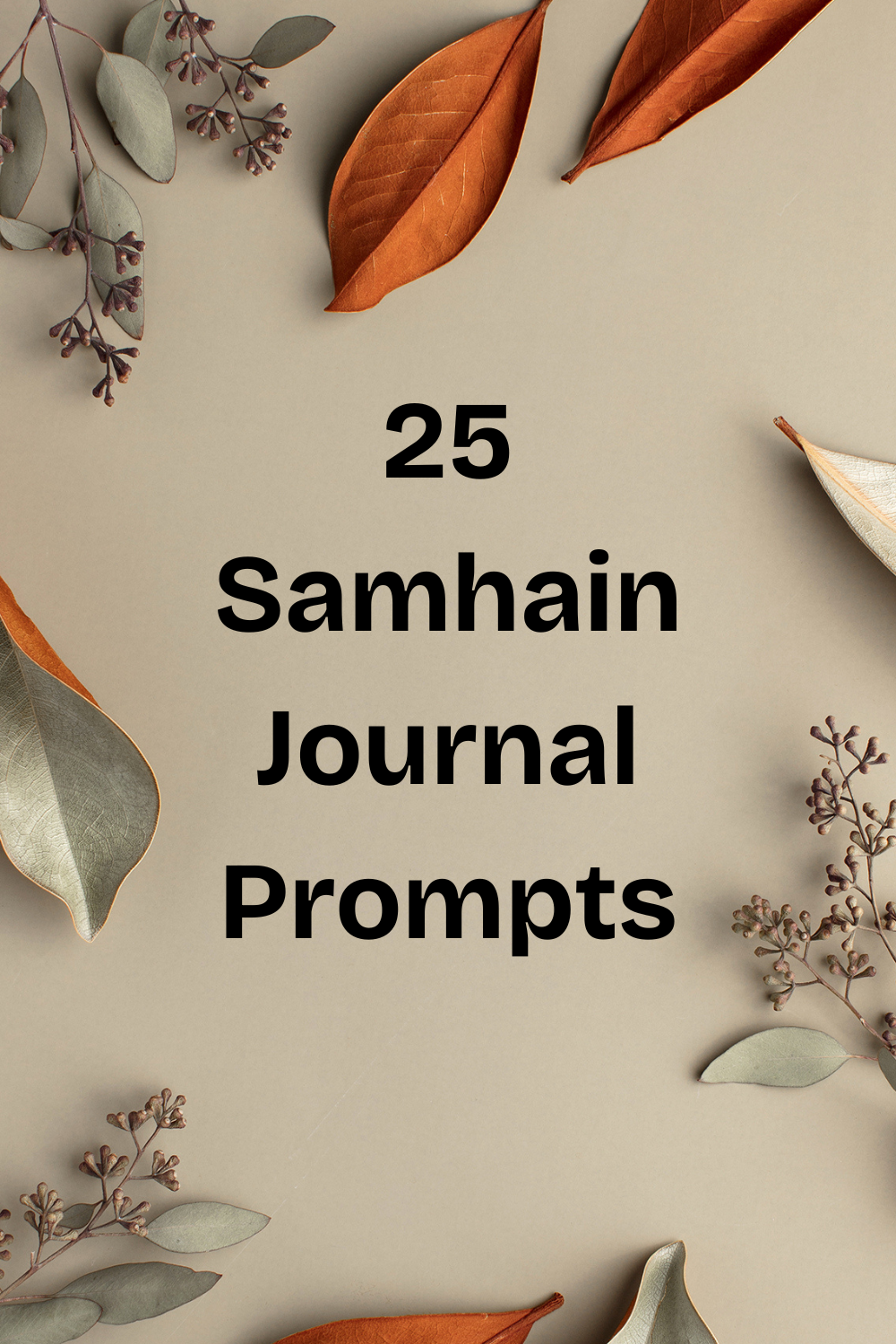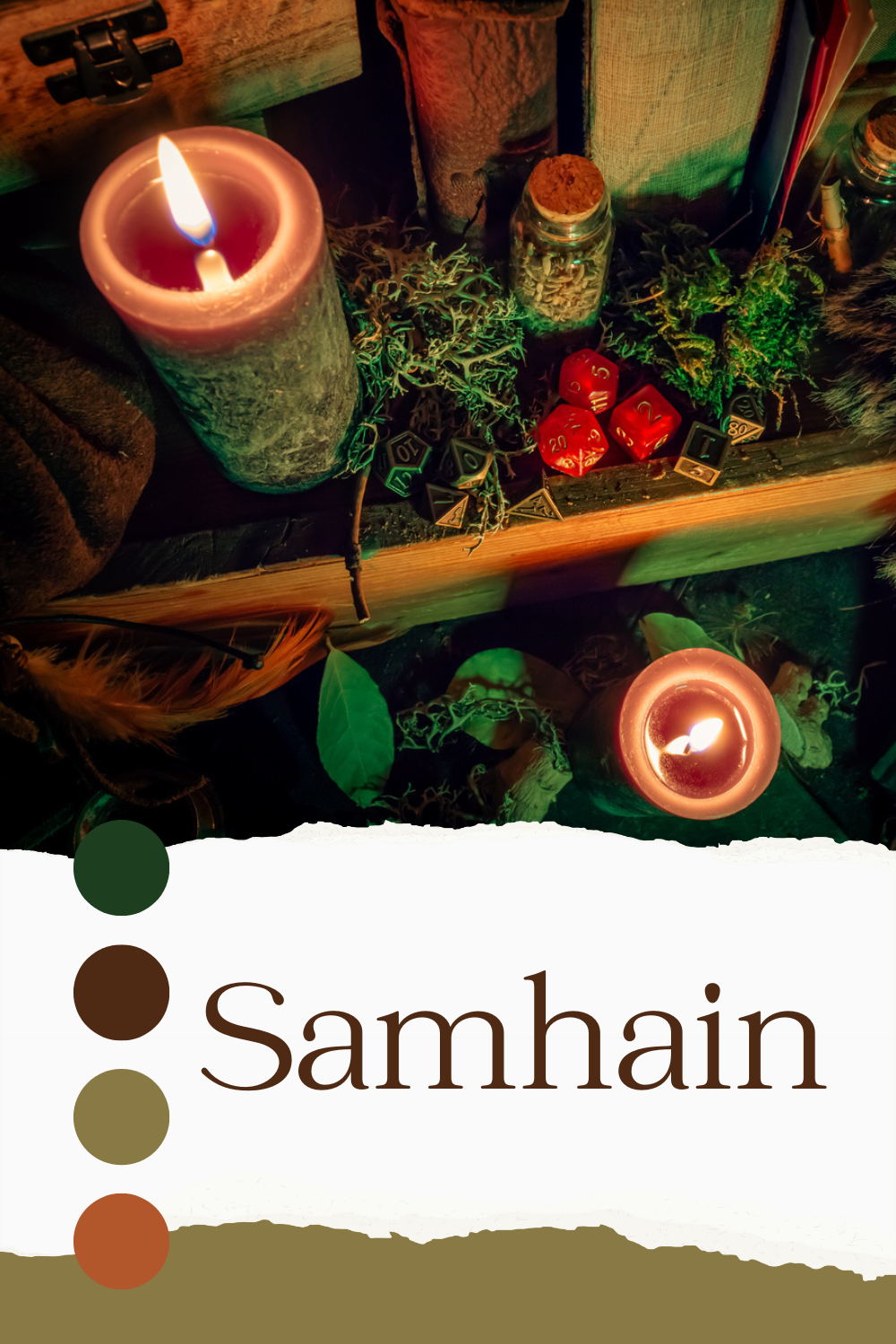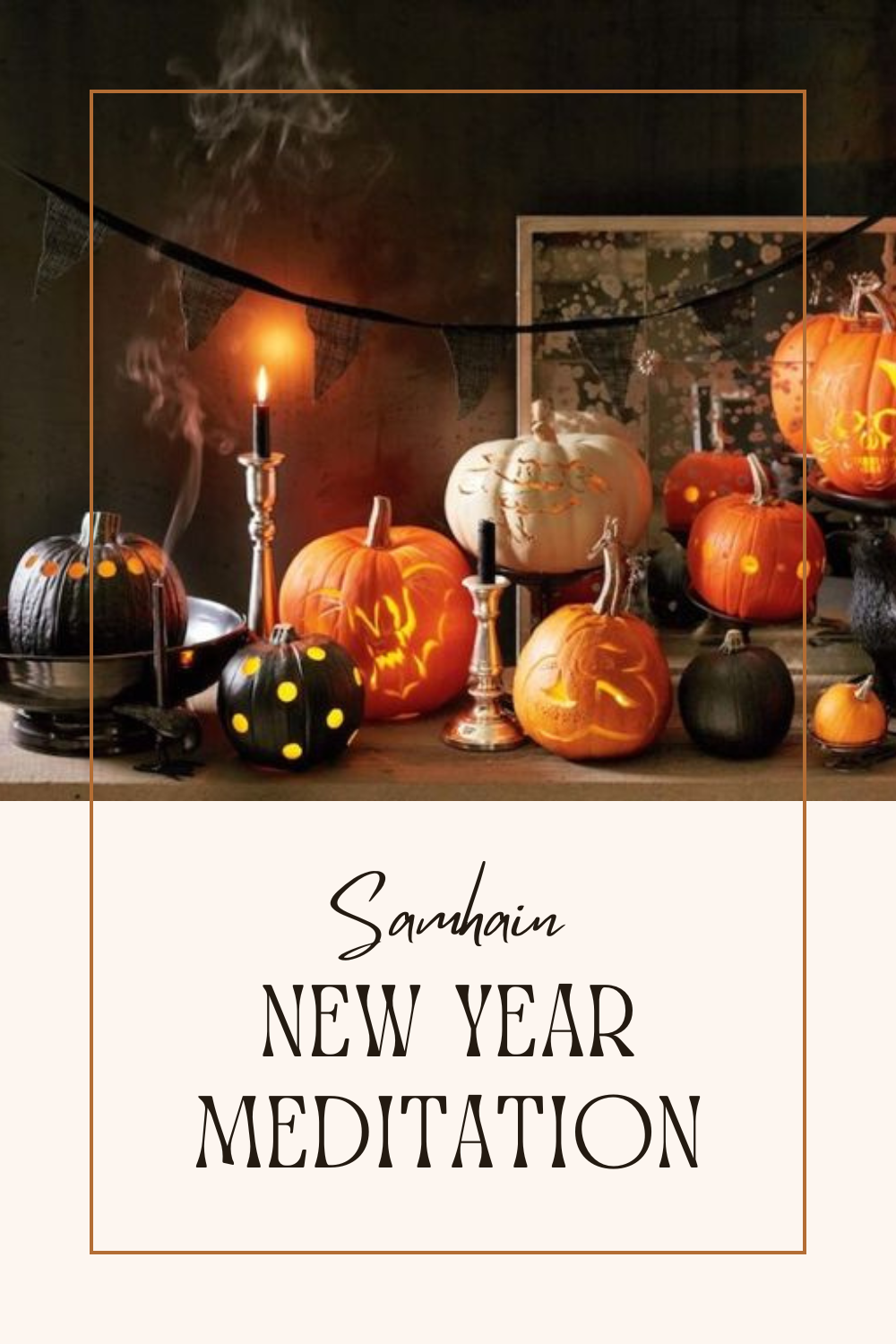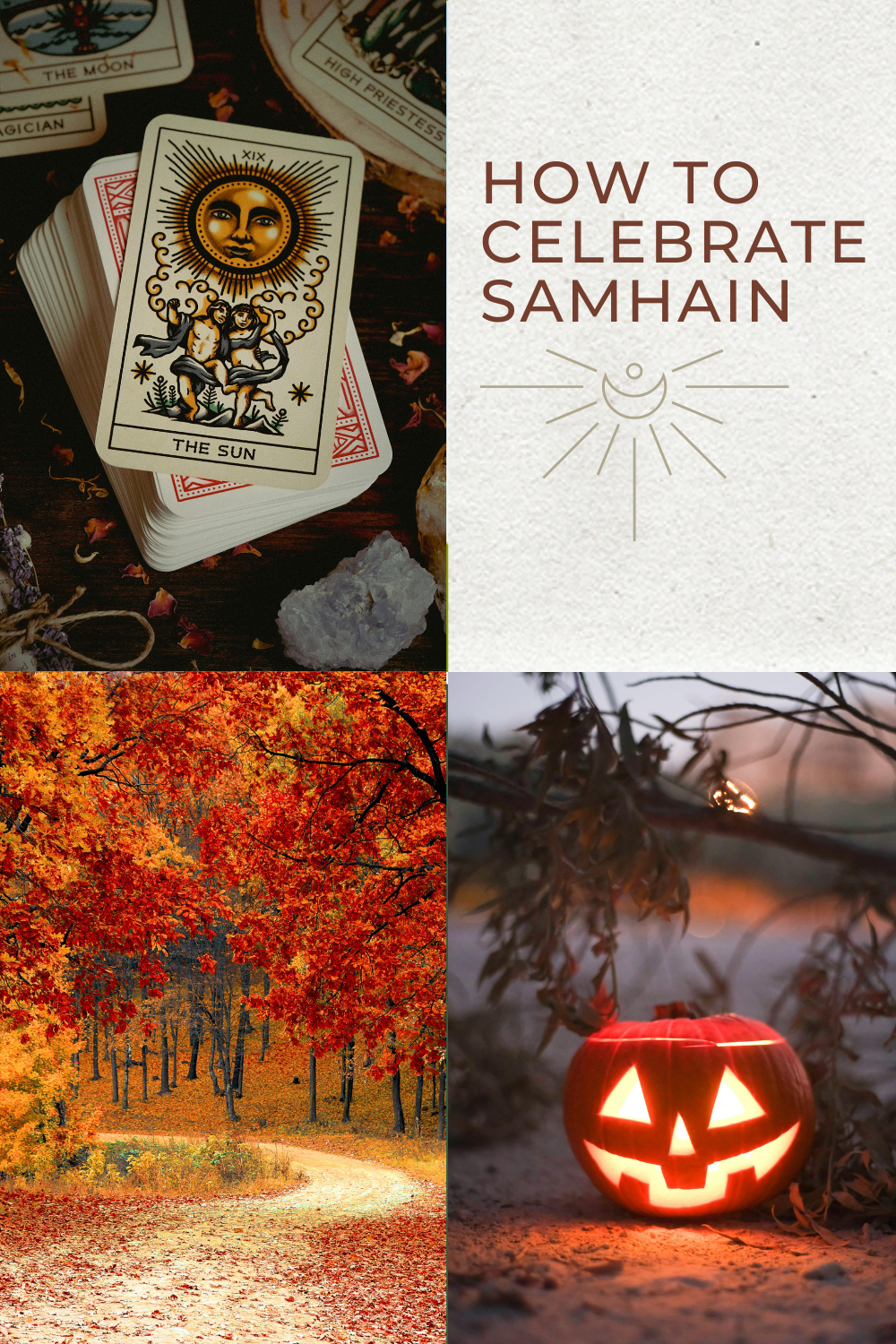Samhain Journal Prompts
Samhain is an ideal time for journaling because it aligns with a natural turning inward—a moment to pause, reflect, and process the year behind you. As the final harvest festival, Samhain marks both an ending and a beginning, offering fertile ground for writing about personal transitions, completions, and what you’re ready to release. The thinning of the veil between worlds also makes this a powerful time to explore your inner landscape, uncover hidden truths, and listen for messages from your intuition or ancestors. Samhain allows you to honor what has died or faded away in your life, and to give voice to the grief, gratitude, or wisdom that may come from those experiences.
Because Samhain is rich with symbolism and spiritual depth, it also encourages meaningful self-exploration through writing. You might record dreams, track divinatory insights, or write letters to departed loved ones. It's a time when the shadows speak more clearly, inviting you to explore aspects of yourself that may be hidden or overlooked. Journaling can help you integrate those parts and clarify what seeds you want to carry into the darker months ahead. Whether you approach it as a ritual, a daily practice, or a quiet moment by candlelight, it becomes a sacred act of remembrance, release, and renewal.
25 Samhain Journal Prompts to Write
What does the thinning of the veil between everyday life and the spirit world mean to me personally?
What have I outgrown this year that I am ready to release?
Who are my ancestors, and how can I honor them during Samhain?
What ancestral wisdom lives within me, whether I know it or not?
How do I feel about death—not just physical death, but endings of all kinds?
What transformation have I undergone this year?
In what ways have I resisted change, and why?
What parts of myself have I hidden in shadow? What do they need for healing?
What am I mourning or grieving, and how can I honor that process?
What dreams or insights have come to me lately that feel significant?
What does “letting go” look like in my journey right now?
What ideas or beliefs give me a sense of spiritual protection?
What are my beliefs about the afterlife or the spirit realm? How do these beliefs make sense to me?
How do I want to be remembered by future generations?
What spiritual practices make me feel most grounded? How have they been important to my spiritual journey?
If I could speak with one ancestor (a blood relative or any person from the past, even if they're from other cultures), who would it be and what would I ask?
What symbols or signs have shown up for me this season?
How do I create and maintain boundaries between the physical and spiritual worlds?
What fears am I ready to face and transform?
What stories from my lineage or culture have shaped me?
What role does intuition play in my decision-making?
What does nature teach me at this time of year?
How do I navigate solitude, and what does it teach me?
What spiritual or creative seeds do I want to plant for the next season? What new beginnings or ideas do I want to create?
How can I honor or even celebrate the darkness without being afraid of it?
Samhain Celebrations
Samhain is an ancient Celtic festival marking the end of the harvest and the beginning of winter. Celebrated from sunset on October 31st through November 1st, Samhain is considered one of the most spiritually significant points on the Wheel of the Year. It is a liminal time, when the veil between the physical and spiritual worlds is thinnest, allowing for deep introspection, ancestor veneration, and heightened intuition. Traditionally, it was a time to honor the dead, prepare for the cold months ahead, and reflect on the cycles of life, death, and rebirth. Many modern Samhain practices—such as lighting candles, carving jack-o'-lanterns, and setting out offerings—have roots in these ancient rituals.
Samhain invites us to slow down and embrace the mysteries of the unseen. It's a powerful time for divination, dreamwork, and rituals of release, making space for inner transformation and renewal. Whether through quiet meditation, lighting a candle for a departed loved one, or holding a feast in honor of ancestors, this festival encourages a deep connection to both spirit and self. As the nature turns inward, shedding what no longer serves, we are called to do the same—carrying forward what is wise and true, and leaving the rest behind. Samhain is not only an end but also a beginning, offering a sacred pause between what has passed and what is yet to come.
Introduction to The Wheel of the Year, the Cycle from Yule to Samhain
The Wheel of the Year is a spiritual calendar that underscores the cycle of the seasons. It details a web of holidays, or sabbats. By honoring this calendar, we can think about how nature around us changes, and we can think deeply about the same changes in ourselves.
The season of Yule, or the winter solstice, marks the longest night and shortest day of the year. The Wheel then turns to Imbolc (February in the northern hemisphere; August in the southern hemisphere), when the ground begins to awaken from its slumber and the sun begins to provide more light to the winter months. Next is Ostara, the spring equinox, when light and darkness are balanced and the Earth officially greets spring.
The fire festival Beltane marks the start of summer. The sun is strong, and the earth is full of life. The Wheel then turns to Litha, also called Midsummer (the summer solstice), the longest day of the year. The sun is at its strongest and the bright summer season is in full swing. Fire rituals and community celebrations of hard work and abundance fill the air!
The first harvest festival, Lammas, arrives at the end of summer. Lammas marks the start of the harvest season, a great time for giving thanks and recognizing the yield of our hard work. The shadows are starting to stretch longer. At a harvest festival, Mabon, the autumn equinox brings balance to the earth once again, as day and night equalize.
Finally, the Wheel's end and beginning is at Samhain, the final community harvest festival. The veil between worlds is thinnest, the land is in shadows, and it is the perfect time for reflection on the past, letting go, death, and looking to the next year. The sun is appearing less every day, and we must make a fire to perform our harvest rituals and get ready for winter.
More About Samhain
Now that you have plenty of prompts, would you be glad to learn more about Samhain, or Halloween? Or check out journal prompts for Yule, journal prompts for Ostara, and plenty of other options. Here are some places to start.
About Samhain. Samhain is one of the most ancient and sacred festivals in the Wheel of the Year, marking the end of the harvest season and the beginning of the dark half of the year. Celebrated from sunset on October 31st to sunset on November 1st in the Northern Hemisphere, Samhain falls at a time of visible transition in nature. The days grow shorter, the air turns colder, and the trees shed their last leaves as the land prepares for winter’s stillness. For the ancient Celts, this was the most important of the fire festivals, symbolizing both an end and a beginning—the death of the old year and the quiet birth of the new.
Samhain is also a liminal time, when the veil between the worlds of the living and the dead is believed to be at its thinnest. This sacred thinning allows for deeper connection with ancestors, spirits, and the unseen realms. It is a time for remembering the dead, divining the future, and turning inward for reflection and renewal. The themes of death and rebirth, mystery and magic, make Samhain not only a festival of remembrance but also one of deep transformation. Whether celebrated through ancient rites or modern adaptations, Samhain invites us to listen to the dark and walk with reverence into the mysteries it holds.
For more information, check out our new book, The Samhain Companion!
Samhain Associations. Samhain is rich with themes of death, transformation, and the turning of the year to the dark time. Common symbols include the cauldron, representing rebirth and the womb of the goddess; the skull, honoring mortality and the ancestors; and the black cloak or veil, evoking mystery and the thinning boundary between worlds. A lot of these symbols have made it to modern Halloween celebrations too! Seasonal elements like pumpkins, apples, gourds, and dried herbs connect the holiday to the final harvest and the natural world’s descent into rest. Animals such as ravens, owls, and black cats are also tied to Samhain for their connections to the spirit realm and nocturnal wisdom. Colors like black, deep purple, orange, and silver fill in the balance of shadow and fire, decay and light. And foods include both seasonal favorites like apples and guilty pleasures like Halloween candy and mulled wine. These associations help ground Samhain in both the physical and spiritual worlds, anchoring its rituals in potent, symbolic meaning.
Samhain Meditation. Samhain is a powerful time for meditation because it falls at a natural pause in the year—a threshold between light and dark, life and death, past and future. As the final harvest is gathered and the earth begins to rest, we too are called inward to reflect and listen. The thinning of the veil during Samhain allows for deeper access to intuition, ancestors, and the unseen realms, making meditation especially potent. It’s a time when stillness can reveal profound insights, and when quieting the mind can help us release what no longer serves and prepare spiritually for the dark, introspective months ahead. Meditating at Samhain helps us attune to the subtle energies of transformation, grief, guidance, and rebirth.
How to Celebrate Samhain. Celebrating Samhain can be both deeply personal and richly communal, offering space for reflection, remembrance, and renewal. Many observe the holiday by remembering their ancestors—setting a place for departed loved ones at the table, building altars with photographs and mementos, or holding silent suppers in their memory. It's also a powerful time for spiritual practices such as divination, shadow work, or ritual release, using the thinning veil to connect with deeper truths and unseen realms. Lighting candles, walking in nature, or holding small bonfires can mark the transition into the dark half of the year with intention. Whether through solitary meditation or gathering with others to share stories, music, and seasonal food, Samhain invites us to celebrate what has passed, embrace mystery, and plant the seeds of transformation for the coming year.
Cerridwen and Samhain. Cerridwen, the Welsh goddess of transformation, inspiration, and rebirth, holds deep resonance with the spirit of Samhain. As the keeper of the cauldron of Awen—symbol of divine wisdom and the eternal cycle—Cerridwen embodies the alchemical power of death and renewal that defines this liminal festival. Samhain marks the end of the old year and the beginning of the new, a time when the veil between worlds is thin and transformation is possible. Cerridwen’s myths, particularly her tale of brewing a potion of knowledge and undergoing shapeshifting trials, mirror the inner work of Samhain: facing the shadows, releasing the past, and emerging with deeper insight. Honoring Cerridwen at Samhain invites guidance through personal transformation and connection with the ancestral knowledge that flows through the dark half of the year.
Why Should You Keep a Journal?
Journaling is surprisingly beneficial for writers! Make yourself a cup of tea, and let's get started. Writing down your thoughts, projects, and experiences can help you process emotions, track personal growth in your life, come up with ideas, decide on your political beliefs, celebrate your wins, and even spark creativity. Journal prompts are a good way to get started.
Write to Practice Writing
Like anything, practice matters when it comes to writing. That means choosing each word as you are writing can help your writing shine in other areas of your life! And these prompts are a great place to start your practice.
Write to Reflect on Your Goals
Depending on what you write about, writing can be an opportunity to focus on your personal growth, dreams, feelings, goals, and in-the-moment progress. Set intentions and write about why you want to achieve the goals you've set and brainstorm ways to focus on and achieve them. Write about what you are letting go of and the lessons you learn along the way, too. Don't forget to track the time you spend and how you feel about your progress in your journal! And of course, describe and celebrate your successes as they come.
Similarly, you can use your journaling time to think through a situation in your life to sort out how you want to address it. For example, sometimes using your writing time to describe a problem with another person and imagine ideas for a solution can make it come to reality.
Write to Improve Your Health
Studies are showing that writing in your journal may also reduce stress, improve your immune system response, promote self love in your life, and even boost your memory. Here's an article from Intermountain Healthcare about how it can improve your life.
More Self Reflection Writing Prompts for You
If you are looking for more prompts after fall, here is the perfect opportunity to grab a cup of tea and keep writing. You can find plenty of options here, including higher self journal prompts and other creative writing prompts to write.









